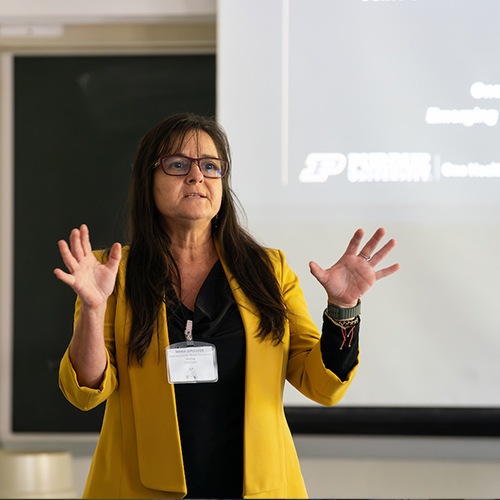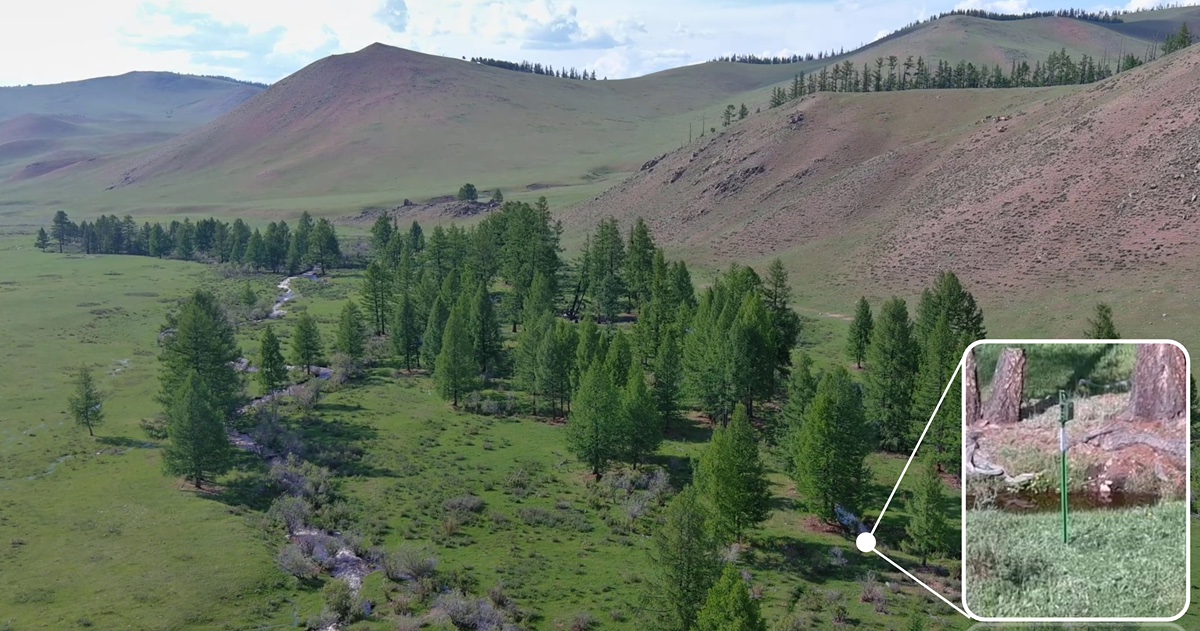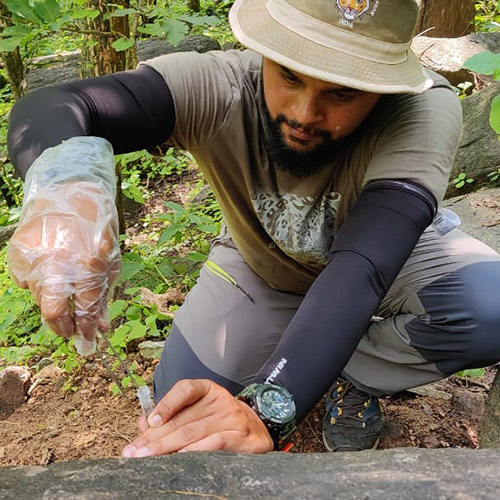FNR Field Report: Tam Tran
Tam Tran, a senior majoring in wildlife and minoring in aquatic sciences, spent the summer as a habitat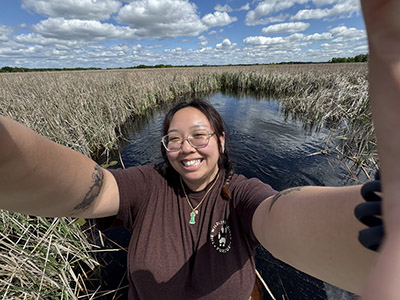 management intern at Carlos Avery Wildlife Management Area in Minnesota after finding out about the opportunity on the Minnesota Department of Natural Resources Facebook page.
management intern at Carlos Avery Wildlife Management Area in Minnesota after finding out about the opportunity on the Minnesota Department of Natural Resources Facebook page.
In that role, the South Bend, Indiana, native assisted in monitoring water levels of the various areas around the WMA, which are managed for wild rice, waterfowl and game species. She also removed invasive species like garlic mustard and spotted knapweed, conducted wildlife surveys (goose banding and wood duck banding) and assisted in disease surveillance (chronic wasting disease testing in deer and swabbing turkey heads for diseases like avian pox, avian influenza, etc.).
Tam also had opportunities to work with different departments within the Minnesota DNR throughout her internship. With the Fisheries Department, she assisted in fish surveys that included gill netting, seining, electrofishing and net trapping. With the Parks and Trails Department, she assisted in nature carts, plant surveys and even a mussel survey.
Towards the end of her internship, she helped manage hunter walking trails to assist the wildlife staff, which was preparing for hunting season.
“I learned how to properly walk through a wetland which isn’t as easy as it seems,” Tran shared. “But in all seriousness, I learned so much. It was interesting to see how the decisions we make can change so much in the habitat and how that directly affects wildlife. Even though I spent most days not directly handling wildlife, the work I was doing was crucial to the quality of life for wildlife in these habitats. I also learned a lot about the public. One of the things a supervisor said to me was that the public will never be completely happy and the best that you can do is to balance it in a way that people aren’t on the extremes of angry and happy.”
Tam noted that her favorite parts of the job were the people and wildlife she encountered daily.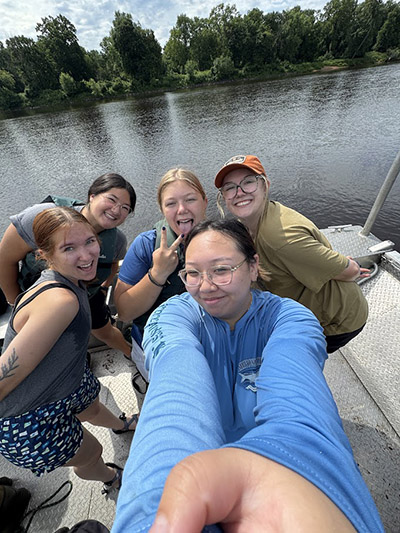
“Honestly, one of my favorite parts of the job was driving through the unit,” Tran stated. “Every day I would come across something different. One day it’s a Blanding’s turtle, other days it’s deer. I also really enjoyed the opportunities to work with the different departments under the DNR. It was fulfilling to see how every department works differently, but all under the goal of protecting wildlife. The people I met through Carlos Avery were also my favorite part of the job. Everyone was so kind and welcoming, and my supervisor really advocated for me when it came to seeing more of Minnesota through shadowing with other departments. All my colleagues strongly encouraged my learning and pushed me to be my best.”
Her role did offer some challenges, however.
“As a person of color, I was in a predominantly white area,” Tran explained. “Of course, with that came negative interactions with different people, like small microaggressions here and there. It was definitely frustrating to be in those situations.”
Despite the negatives, Tran was grateful for the opportunity to apply her FNR courses in the real world and expand her career goals and experiences.
“The ID courses I’ve taken during my time at Purdue and at Summer Practicum helped me while in Minnesota,” Tran shared. “I saw lots of herbaceous plants I learned during Practicum with Dr. Jenkins, and trees that I have ID-ed through my dendrology course. Before my internship, I took Fire Ecology with Jarred Brooke and Dr. Mike Saunders, which gave me lots of perspective when I would visit sites that had been burned only a couple months prior to my arrival. And of course, Habitat Management with Dr. Flaherty was extremely applicable during my internship. I saw lots of tools that I learned about in that class being used for habitat management and got to see firsthand all the parties involved when it comes to managing wildlife management areas that are newly acquired.
“Coming into this internship, I was concerned about my capabilities. I feared that I wouldn’t feel welcome, or that I would learn that I wasn’t cut out for this. But none of that happened. It felt fulfilling to be recognized for my abilities and to solidify in myself that this is what I want to be doing for the foreseeable future.”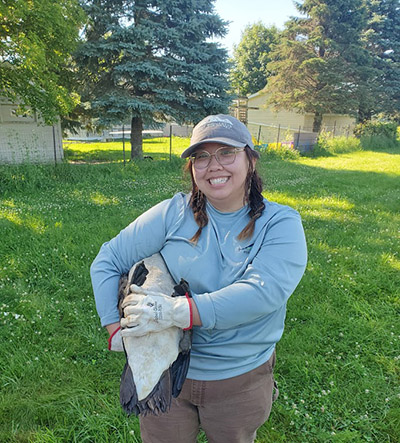
The internship was not Tam’s first job in natural resources. She also has served as a hellbender husbandry technician at the Purdue Aquaculture Research Lab and as a DNR field/scoring assistant using infrared cameras to detect deer, turkey and coyote for research projects in Dr. Pat Zollner’s lab.
Tran also has been active in Purdue FNR student organizations, acting as the treasurer for the student chapter of The Wildlife Society and as a student council rep for the student chapter of the American Fisheries Society.
As she approaches her final year of coursework, Tam is confident in her future prospects.
“The internship and the opportunities I was given showed me a whole other world of positions that I could see myself in,” Tran noted. “Working with wildlife health doing disease surveillance was something I learned I really enjoyed, which I did not know coming into this internship. Through seeing what my coworkers did as well, it also made me aware of the fact that regardless of what position I end up in, I will always work with the public, just in different ways, which will be something I keep in mind when applying for different positions in the future.”




